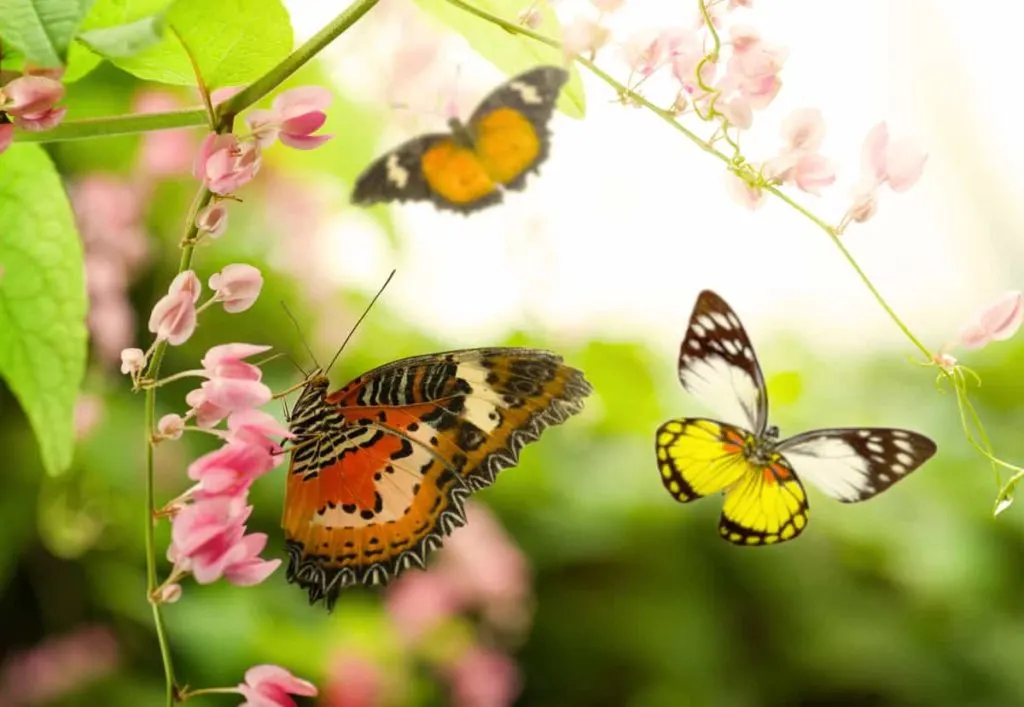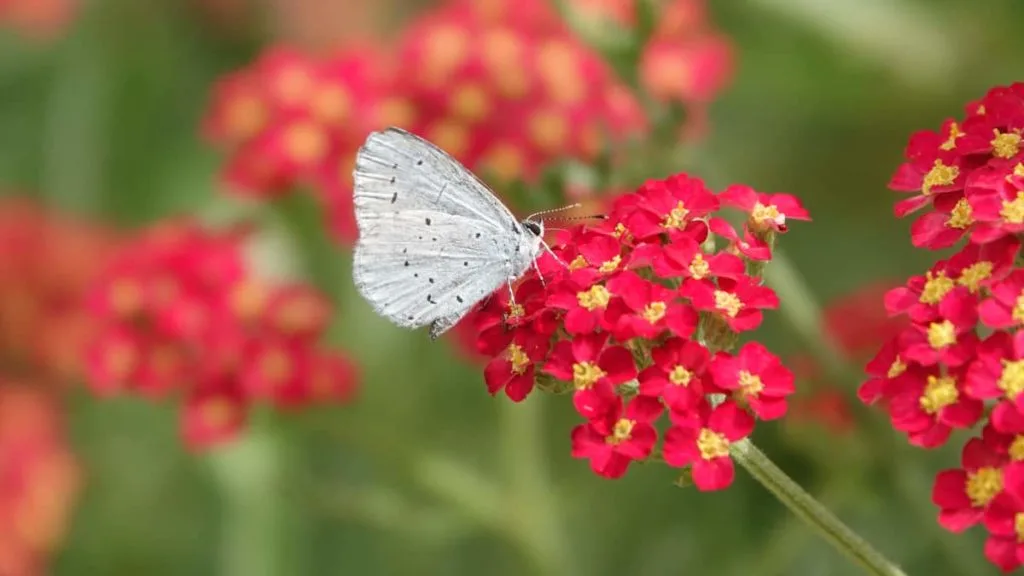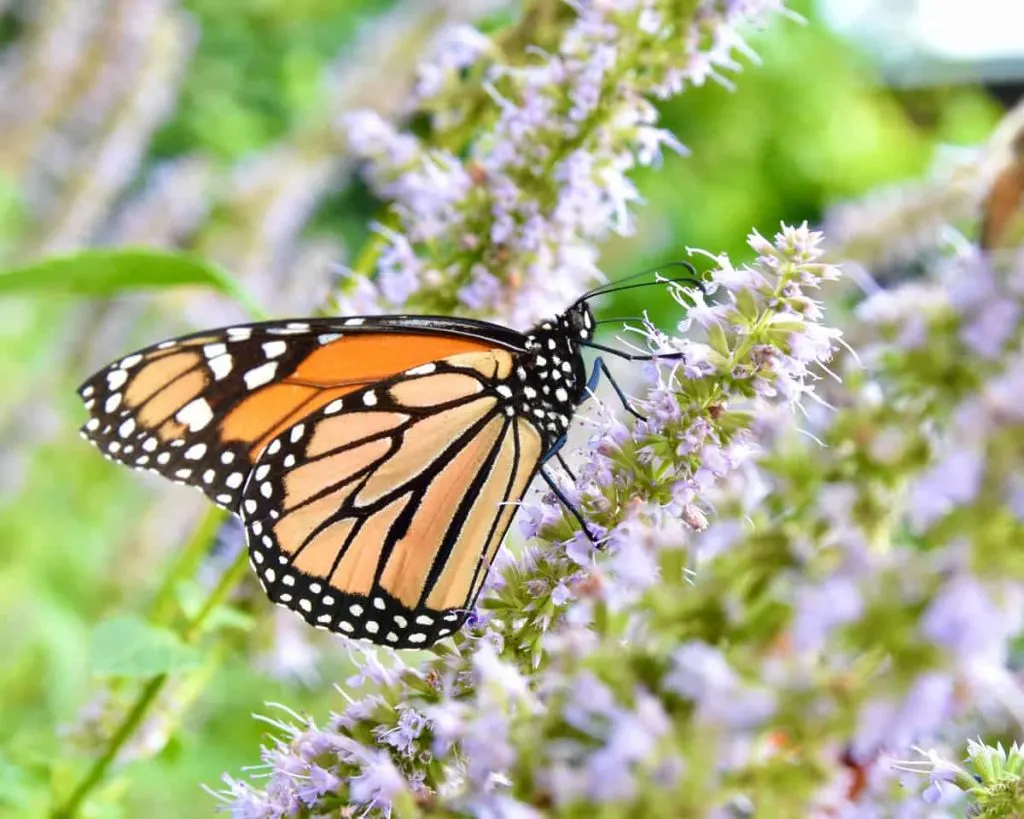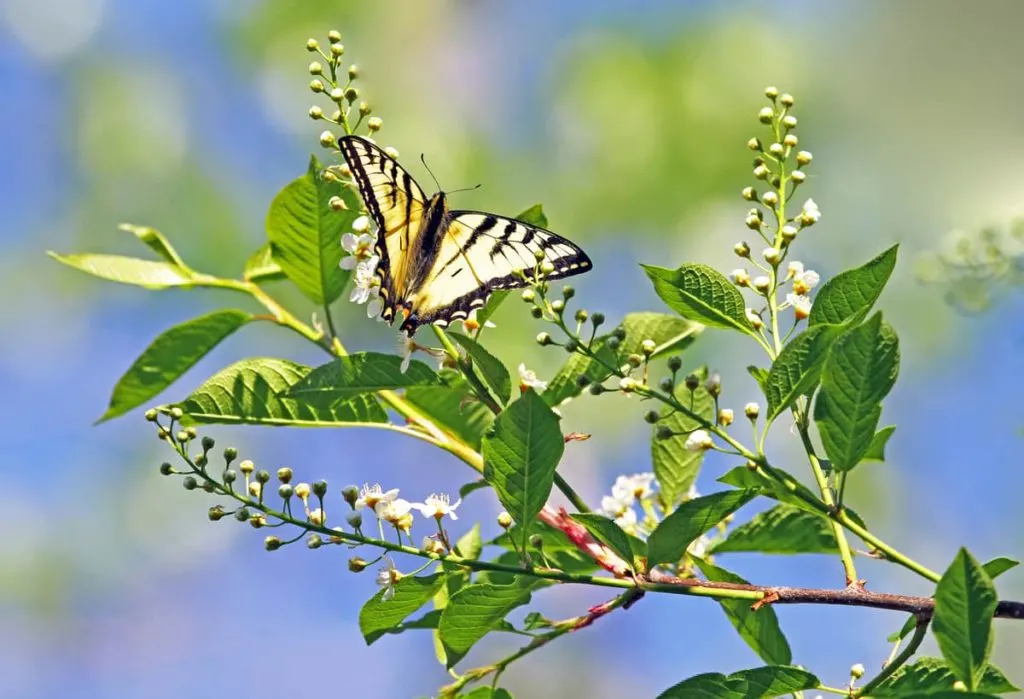
Butterflies add that extra special something to the blooming garden. They arrive in waves spring through fall. Not only gorgeous but a symbol of success for the environmentally minded gardener.
Butterfly Bloom Time
So many butterflies, so little time.
For those of us prone to be obsessed with growing spectacular, unique, or rare plants, slipping into a butterfly obsession is an easy fall to make. With over 18,000 known species worldwide, it’s no wonder!

From small blue butterflies to giant swallowtails each with their own season. Yes, some are famous for their multigenerational epic migrations, like the spectacular Monarch. Others might spend their entire lifecycle in your garden, only flying around for about a week.
Buttering Up for Bountiful Butterflies
There are many flowers we can grow that create gorgeous garden spaces that feed and encourage many butterfly species. Spreading out the bloom times from early spring through to autumn will help provide food for a variety of them.
Beyond the pretty flowers, grow not-so-gorgeous host plants, allow for some shallow standing water, and some, well, muck. Find out about butterflies who frequent your area and what they love.
Blend host plants, native plants, nectar and food plants, with herbs for success. Providing some protected areas for all the stages of the butterflies’ lifecycle are some best practices for encouraging butterflies to visit the garden.

It also helps to avoid herbicides, fertilizers, and pesticides as these can affect butterfly populations throughout their lifecycles.
Putting Up with Caterpillars and Their Munching Mouths
Yes, caterpillars are necessary for a successful butterfly garden. A great way to succeed in butterfly gardening is to maintain protected areas that contain host plants for butterflies to lay eggs. These eggs hatch into caterpillars, eating everything they can until they reach their cocoon stage. At last, they emerge as beautiful butterflies.
At the back of the border, or on the less conspicuous side of the garden shed, plant host plants. An area that can be less tidy with leaf litter and debris left in place can be an oasis for emerging butterflies.
16 Perennial Plants, Herbs, Shrubs & Trees For Butterflies

Here we have a list of plants that serve as host and/or nectar plants to start your journey into inviting these beautiful creatures to your garden.
Perennials
The list of perennials below contains plants to establish natural habitat and excellent living conditions so your butterfly visitors might decide to visit more often or even stay longer term.
1. Milkweed (Asclepias)

Milkweed is a genus of herbaceous perennial plants that is the main food source for the migrating monarchs.
Depending on the species, it grows 2 to 4 feet tall. It serves as both host and nectar plant, blooming in large terminal clusters June through August, thriving in zones 4 and above.
Read more about why milkweed is essential for attracting monarch butterflies in our article here.
2. Yarrow (Achillea millefolium)

A hardy plant that is native to North America, Yarrow grows 2 to 3 feet tall. It has a long bloom season from June to September.
Its blooms vary from white, yellow, rose, and hot pink. They are visited by butterflies and beneficial insects. A tough plant that can even tolerate mowing, it is hardy in zone 3 through 9.
3. Aster (Asteraceae)

Asters are often the solution when searching for late season color in the perennial border.
A large family of plants, they grow 1 to 6 feet tall in zones 3 to 8. They are prolific star-shaped bloomers in shades of white, blue, and purple of large daisy-like flowers.
4. Pearly everlasting (Anaphalis margaritacea)

Another North American native plant loved by butterflies which grows up to 3 feet tall in zones 2 to 7. It is noted for its long bloom time from summer through fall.
5. Stonecrop (Sedum)

A low-maintenance, drought tolerant, succulent perennial with surprisingly gorgeous blooms. Excellent in a naturalised rocky setting, it grows 6 to 24 inches tall in zones 3 to 9.
Its blooms are long lasting throughout the summer months.
Herbs
6. Fennel (Foeniculum vulgare)

Fennel is a wonderful herb to grow that thrives in zones 4 to 9. Its fragrant blooms can top out at 3 to 5 feet tall and arrive midsummer and persist to frost.
7. Oregano (Oreganum vulgare)

The usefulness of this plant cannot be understated. Best of all, you can almost completely leave it alone and it will grow 18 to 24 inches with prolific terminal clusters of blooms which persist summer to frost. It thrives in slightly dry conditions in zones 3 to 12.
8. Chives (Allium schoenoprasum)

Gorgeous ball-shaped blooms top 18-inch flower stalks over this 12-inch, bright green, grass-like, clump forming herb. Blooms arrive in late spring and the plant does well in zones 3 to 9.
Shrubs
9. Butterfly bush (Buddleia davidii)

It goes without saying, this shrub is well named with its large blooms that arrive in spring and persist into summer. Butterfly bush prefers zones 5 to 9 and grows 5 to 8 feet tall. In the warmer states, some butterfly bush may reach heights of 10 to 12 feet.
10. Rose of Sharon (Hibiscus syriacus)

This hardy hibiscus thrives in moist climates in zones 5 to 9, blooming large single flowers in July and August. This shrub benefits from pruning for bushier plants and may reach 8 to 12 feet tall.
11. Summersweet (Clethra alnifolia)

This prolific bloomer of large flower spikes reaches 3 to 6 feet tall in zones 4 to 9. It blooms mid to late summer for 4 to 6 weeks.
12. Elderberry (Sambucus nigra)

Famed for its uniquely scented flowers and potent fruit, elderberry can reach up to 20 feet tall in zones 4 to 7. It blooms in late spring to early summer depending on the climate.
13. Lilac (Syringa)

A large classic long-lived shrub that blooms as early as April with some varieties still blooming in June. There are dwarf lilacs, lilacs that grow suckers, and some that do not.
Many will reach 12 to 15 feet tall. They thrive in zones 3 to 7 and prefer alkaline soil.
Trees
14. Chokecherry (Prunus virginiana)

A small tree or large shrub that reaches 20 to 30 feet. Chokecherry blossoms are large, long clusters 3 to 6 inches in length. It is a hardy native plant that blooms May through June. It is found in zones 2 to 6.
15. Willow (Salix sp.)

Willow is a large genus of woody plants that may be small shrubs with some species reaching massive 70-foot tree stature. They bloom in early spring and willow species grow in zones 2 to 9.
16. Crabapple (Malus sylvestris)

A friend of the butterfly, crabapples provide full season interest, sanctuary, and food for butterflies. Many varieties reach 15 to 40 feet tall, growing in zones 0 to 9. They bloom on last year’s wood in early spring.
The variation and choices available when choosing a crabapple or two is extensive. Keep the butterflies in mind so the bloom time may match a choice butterfly species you wish to encourage in your garden.
Final Thoughts

Attracting butterflies to the garden is an enjoyable endeavor. A balanced approach may be the secret of your success.
- Include using host plants to welcome and harbor crawling caterpillars.
- Allow some areas to remain untidy to protect butterflies in each stage of their lifecycle.
- Aim for a progression of bloom times to provide nectar and food to a wide variety of emerging butterflies.
- Avoid chemical herbicides, pesticides, and fertilizers.


